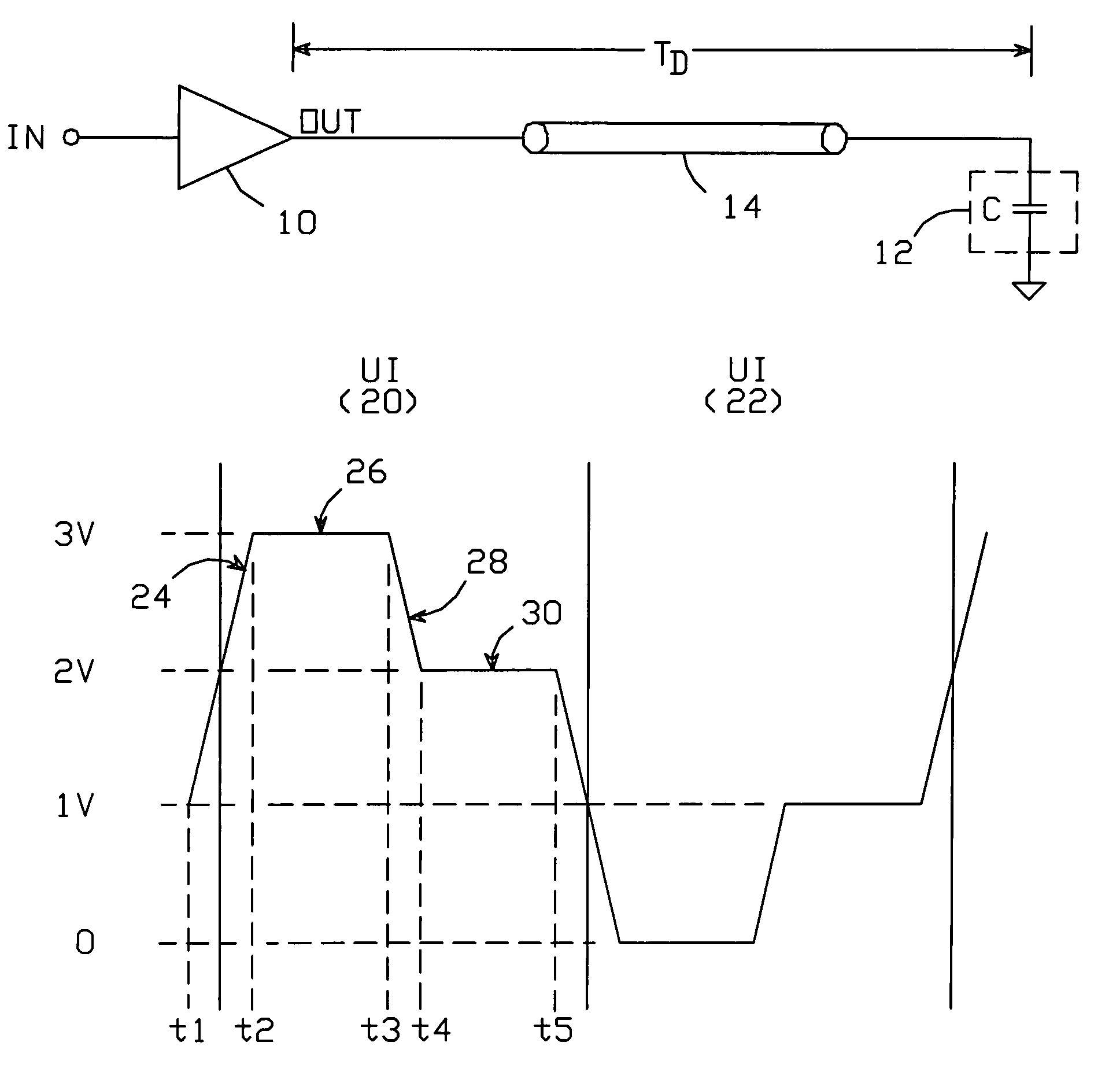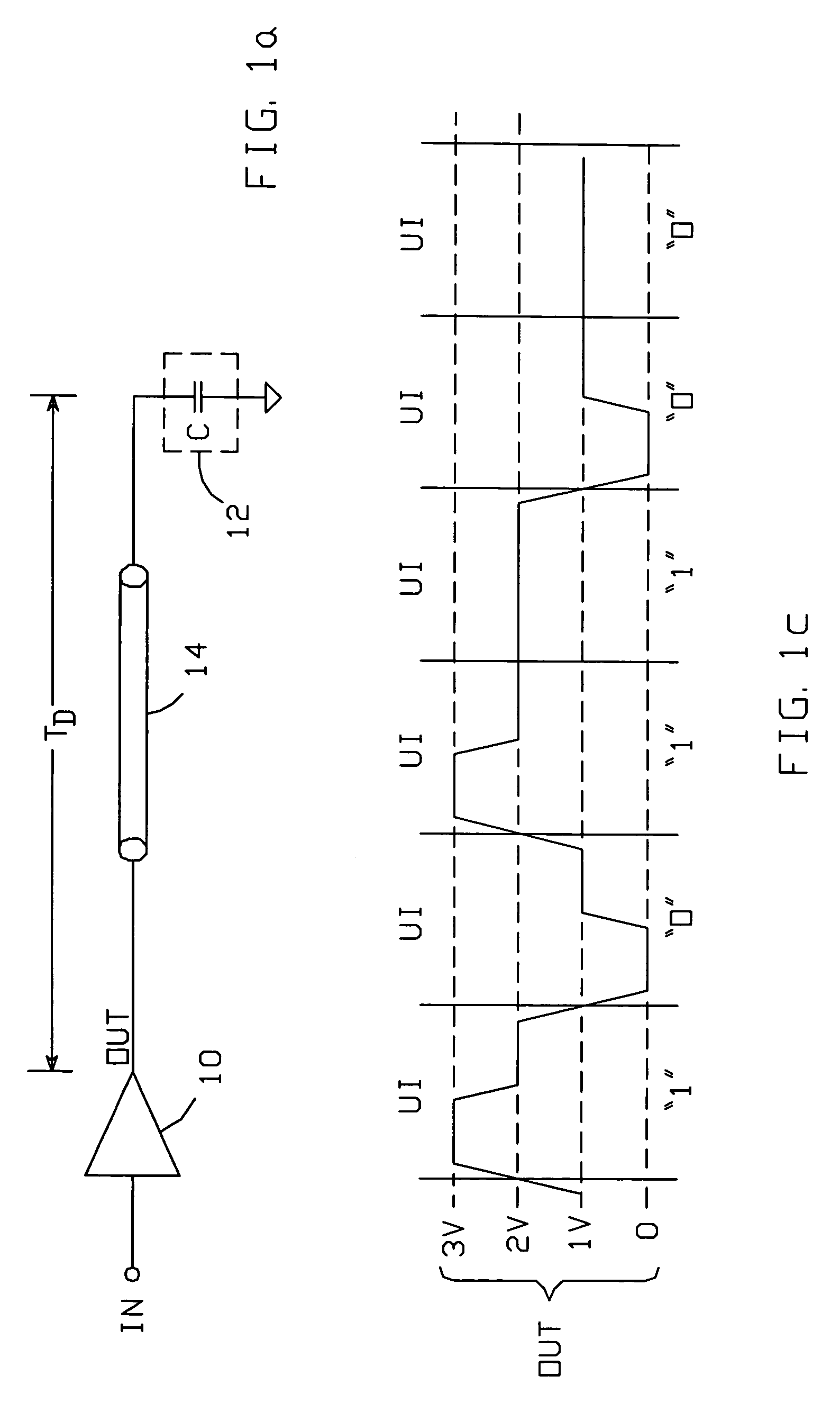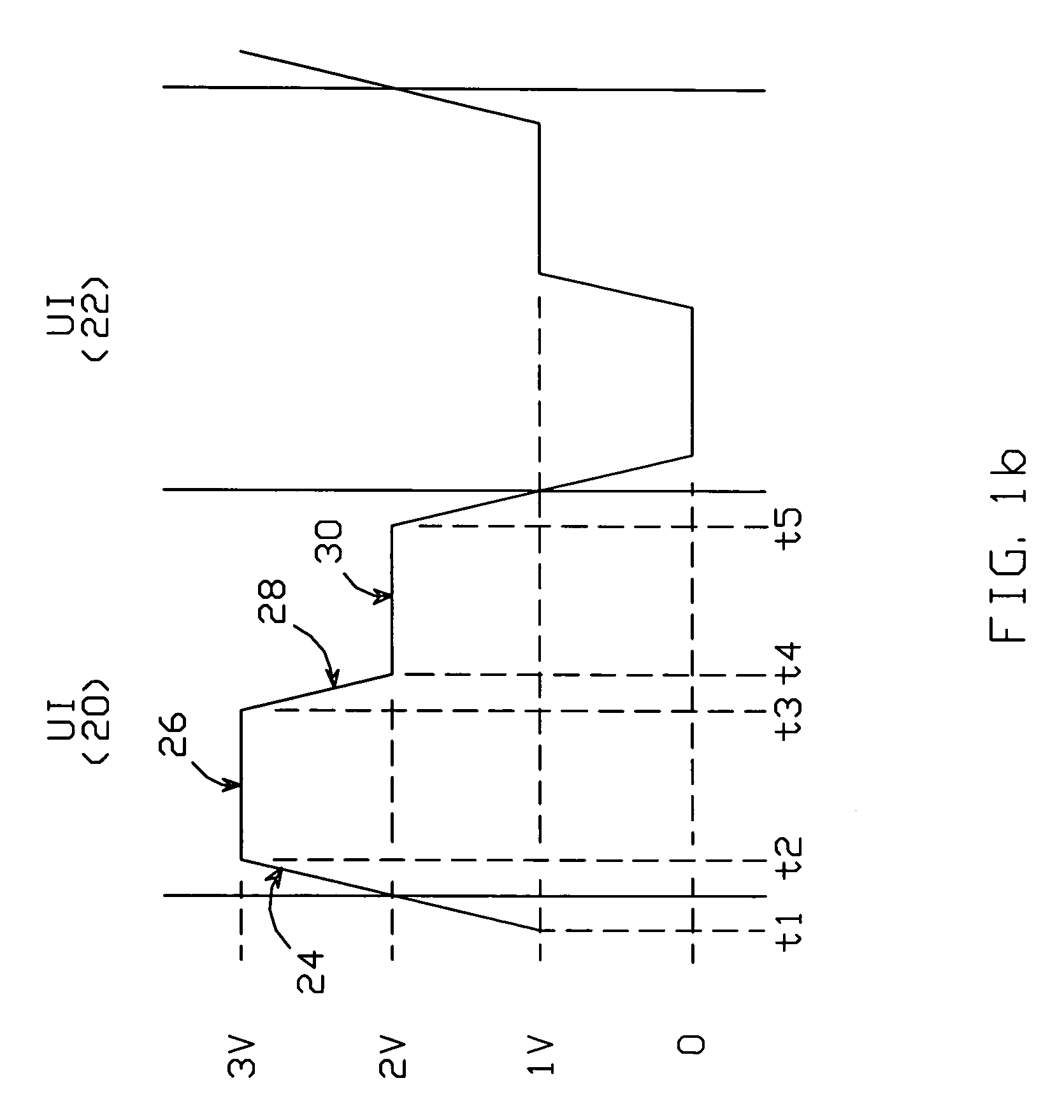Output buffer with time varying source impedance for driving capacitively-terminated transmission lines
a capacitively-terminated transmission line and output buffer technology, applied in the direction of transmission, logic circuit, electric pulse generator, etc., can solve the problems of data signal distortion, impedance mismatch, transmission line and load impedance equalization, etc., to mitigate the effect of wave reflection
- Summary
- Abstract
- Description
- Claims
- Application Information
AI Technical Summary
Benefits of technology
Problems solved by technology
Method used
Image
Examples
Embodiment Construction
[0025]The present output buffer is intended for driving a capacitively-terminated transmission line as illustrated in FIG. 1a. An output buffer 10 generates a high speed data signal at an output OUT in response to an input signal received at an input terminal IN; the data signal is conveyed to a load 12 via a transmission line 14. Load 12 can be any manner of circuit; for example, a memory cell's address circuitry. The load driven by the data signal includes a capacitive component, such that transmission line 14 is said to be “capacitively-terminated”; in FIG. 1a, the capacitive component of the load is represented as a capacitor C.
[0026]As noted above, a capacitively-terminated transmission line suffers from several problems, including data signal distortion that arises due to data signal transitions which are reflected by load 12 towards source 10, and back again towards the load. Also, an output buffer 10 having a low output impedance provides fast data signal transitions at the ...
PUM
 Login to View More
Login to View More Abstract
Description
Claims
Application Information
 Login to View More
Login to View More - R&D
- Intellectual Property
- Life Sciences
- Materials
- Tech Scout
- Unparalleled Data Quality
- Higher Quality Content
- 60% Fewer Hallucinations
Browse by: Latest US Patents, China's latest patents, Technical Efficacy Thesaurus, Application Domain, Technology Topic, Popular Technical Reports.
© 2025 PatSnap. All rights reserved.Legal|Privacy policy|Modern Slavery Act Transparency Statement|Sitemap|About US| Contact US: help@patsnap.com



